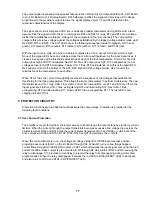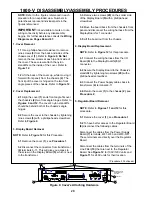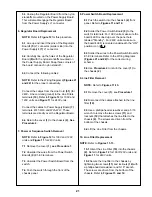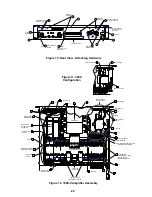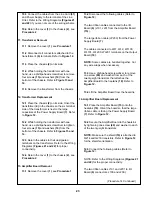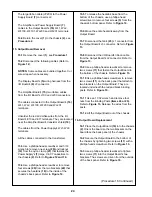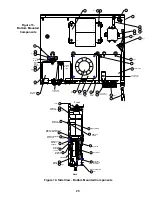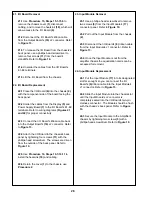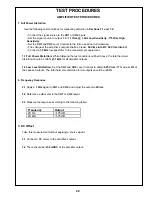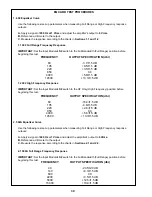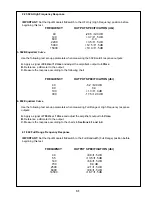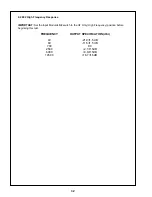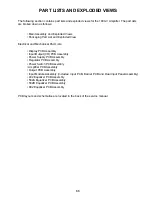
18
3.2 Clipping Eliminator Circuit
This circuit is controlled by the LED/LDR opto-isolator U3, located on the I/O Board. The LED portion of
this component is driven from a bridge rectifier (D4) that gets its input signal from U100A-1 on the
Amplifier Board. Under normal conditions (undistorted amplifier output) there is almost no signal at this
point. If the amplifier is driven into clipping, the signal level at U100A-1 rises rapidly because the feedback
signal no longer represents the input signal. Once this occurs, the LED in U3 illuminates, reducing the
resistance of the LDR portion which in turn reduces the input signal. The clipping-eliminator circuit is
activated by switch S2B on the I/O Board. When the switch is off, the signal driving the bridge rectifier is
shorted to ground.
3.3 DC Offset
DC offset is sensed by the comparator amplifier U2A on the I/O Board. If a DC component should appear
at the output, it is sensed through either D6 or D7, depending on its polarity. The output of U2A-1 will
switch from -14VDC to +14VDC, which turns on Q5 via D8. This deactivates the relay, turns the READY
LED red, and turns on the CLIP/PROTECT LED.
In addition, the output of U2A-1 is conveyed to the Regulator Board via D15, J100-12 to Regulator Board
J1-12 and D9. The positive voltage on U5A-2 causes the output of U5A-1 to become less positive,
shutting off the conduction current through optocoupler U1, which shuts off the triac and primary current.
3.4 Overheated Output Transistors
A thermistor (RT100) is positioned near each heatsink. As the negative coefficient thermistor heats up,
the voltage on comparator U2B-6 drops. When it crosses the reference voltage set up by voltage divider
R42/R43, U2B-7 goes positive. This forward biases D17, turning on Q5, which deactivates relay K100.
As the heatsink temperature cools, the thermistor will cool until the voltage at U2B-6 once again crosses
the reference voltage at U2B-5, allowing the relay to reactivate.
3.5 Fan Speed Control
The fan operates at low speed when the amplifier is first turned on. The voltage at the thermistor is
connected to the Fan Drive circuit on the Output Board via D16 (on the I/O Board) and J6-4/J2-4. As the
heatsink temperature increases, the voltage at U1A-3 on the Output Board decreases until it crosses the
threshold set by voltage divider R4 and R6. When this occurs, the output of U1A-1 toggles low, which
turns on Q1. Q1 shorts across R1 and applies the full VF+ voltage to the fan, kicking it into high speed.
3.6 Major Faults
The slo-blo line fuse protects the unit from further damage when a major fault such as a shorted output
transistor or a secondary power supply fault occurs.
If the unit is run at or near its rated power, the fuse will eventually blow. The rated line fuse allows the unit
to be operated without interruption for all musical applications.
Summary of Contents for 1800-V
Page 7: ...Figure 3 502A EQ Card HF Only Response Figure 4 502A EQ Card Full Frequency Response 7...
Page 8: ...Figure 6 802 EQ Card HF Only Response Figure 5 502B EQ Card Response 8...
Page 9: ...Figure 7 802 EQ Card Full Range Response 9...
Page 69: ...402 Equalizer Card Schematic 69...
Page 70: ...502A Equalizer Card Schematic 70...
Page 71: ...502B Equalizer Card Schematic 71...














